First Cousin to Cinderella
By Maude M. Miller
Hollywood magazine, September 1939
*Donated to vivandlarry.com by Meredith
A pair of green eyes gazes steadily but with a suggestion of good-natured defiance at the huge man with the lazy smile and the green shirt, otherwise known as the Assistant Director.
“So you want to be an actress? And you’d like some dialogue? And you think it’s as simple as all that…?” The smile seemed to become lazier and the green shirt greener.
Maybe it was a reflected glare from the green eyes of the speaker. We shall never know. Not that it matters now. If, however, glances could wither, the green-shirt-owner would have had a faded garment as a souvenir of the occasion.
“I am an actress. And I shall have some dialogue.”
Green-eyes was not boasting. She had no idea of being bombastic or difficult. Assurance was hers by the Divine Right of Youth. By the unquestioning faith that her word would be believed, and that her wishes fulfilled because they were both worthy of fulfilment.
The girl with the green eyes will be 26 in November 1939. Skimming back through my old diaries I found the entry I was looking for…in September 1934.
“Met a girl called Vivien Leigh, one eyebrow higher than the other, in Chobham, Kent…” Further down the page is a scribble that says, “She got the laugh of the assistant director, by getting herself a three-line part despite his objections. Looks like she’ll get somewhere some day.”
That was right. She has!
A man in Hollywood with a passion for statistics told me that over two thousand girls had been considered for the part of Scarlett O’Hara…that nearly two hundred had been tested, and that the tests had been reduced to about ten “possibles” when Vivien hove in sight on the Selznick horizon, and something like Cinderella, found herself famous overnight.
The Cinderella we loved in our childhood’s fairy tales were literal people, with poverty, hardship, cruelty as their daily companions; but even Cinderella had that “extra” quality that made her stand out from the crowd when Prince Charming came along.
I like to think of Vivien as first cousin to Cinderella.
Where Cinders used a broom, Vivien applied determination. Her own talents and her personal charm can be visualized as her passport to the Prince’s ball. Hard work was her fairy godmother.
Our friendship dates from that day in 1934 that I mentioned earlier in this story. I remember how I followed my friend, the assistant director, into his tent and asked about the girl with the green eyes.
He shrugged his shoulders. “Just another extra…” he said, turning over some schedules and other papers on his desk. Then a certain doubt appeared in his eyes. “Maybe she isn’t, either, now that I come to think of it. I believe she is one of those ‘special’ girls we got down from London…Oh, I don’t know…I never heard of her before…run away and play, go and talk to the girl, do anything you like, but leave me in peace with these…” indicating the muddle on his desk.
My friend, the assistant director, being obviously in no mood for pleasant small talk, I duly “ran away” and introduced myself.
“Working for your living…or just playing at a game of making films, Miss Leigh?” A bit brutal, perhaps, but just at the particular period British studios were suffering from an overdose of society women who thought it was “marvellous fun” to drive to the studios in their Rolls Royces, and “perfectly stunning” to tell tales of studio life over the Mayfair dinner tables.
There was all the dignity of a dowager duchess inspecting the poultry at the local agricultural show in Vivien’s attitude as she replied to me question.
“I happen to be an actress – and I am not ‘playing at the game’ as you put it!”
That put me in my place!
“Okay, lady,” I said. “You win!” And then we both laughed.
The real warm-hearted Vivien showed in that laugh. I knew that I was about to embark on a new and worthwhile friendship when she said, “Let’s go and have a cup of tea.”
America can laugh all it wants about our British customs of tea-drinking at odd hours of day and night, but tea is still a wonderful institution and breaker-down of barriers. The strong brew, made y the seventh property-boy in a brown enamel teapot big enough for a battalion, and served in a stuffy tent when the rain obliterated part of Kent that afternoon, was no exception.
Vivien was in the middle of telling me about herself when she paused. “Excuse me,” she said, “but I would like to telephone home and see how my small daughter is. She was having tooth trouble all night.”
The shock of most American journalists when they discover that Vivien is the mother of a five-year-old daughter is nothing to my own feelings when the news was broken to me! Vivien looked such a child herself. I still have difficulty taking the fact seriously, although I recently helped to select sun-suits to be sent to her from Hollywood.
Vivien is a strange mixture of child and sophisticate, of actress and mother, with the suspicion now and then, of the siren that was Cleopatra…All very much like Scarlett. By now the whole world knows that Vivien is Irish and French – just like Scarlett, and it has been said, times without number, that Vivien looks like Scarlett. And by such authorities, too, as Margaret Mitchell and Selznick. Much more important is the fact that Vivien has the acting qualifications for bringing to the screen the much-discussed role of Scarlett, the ability to express Scarlett and complexities through the medium of a script necessarily one-tenth the length of the book “Gone With the Wind.”
“It is not the lines that are in the script,” she mentioned to me over lunch one day at the studio, running her hands through her hair till it stood on end, and flipping the pages over in a kind of exasperation. “It is what is left out that we’ve got to tell by in-between acting. Every scene is a highlight – the thing is to convey the missing links…I sometimes wonder if anyone on earth could ever have understood Scarlett. That’s why she is such a fascinating person…”
All of Vivien’s background, all of her acting career seems to have served as a kind of apprenticeship for Scarlett. Those childhood days when she travelled across the world with her mother and father, after her birth in India. Later, when she went to school in London, the same school as Maureen O’Sullivan.
Vivien Leigh’s parents were unusually broadminded about their only daughter’s education…the kind of education every intelligent mother would like to be able to give her daughter. Leaving the school at Roehampton, London, when she was fourteen, Vivien went to Italy, France, Germany to have her various corners rounded off. That she is a good cook in her own home she puts down to the fact that she learned where housewifery is a “career”…in Bavaria. Her discrimination in wines is a legacy from France. Naturally musical and artistic, she soaked herself in art and opera while in Italy. And so to Connemara, Ireland, to her mother’s country, where she might have settled down to a huntin’, shootin’ and fishin’ existence. Her parents, however, believed that a girl should be equipped to earn her own living, and when Vivien said ‘the stage,” they agreed to let her try. She joined the famous Royal Academy of Dramatic Art, in London. There she fell in love. Neither happening jarred on the other. In this you might almost say she took the American viewpoint, where marriage and career frequently are combined.
It may be difficult for America to realize, but there are still husbands around Britain who object to their wives doing anything else but be married…
One day a fellow student at the Academy said the magic word, “films.” They toiled up and down agents’ offices in the Charing Cross Road, and their unnatural beauty won the extra roles in Things Are Looking Up.
The Leigh personality began to assert itself when Vivien persuaded the Transport Department that she was a “special” girl, not just an extra, and therefore rated “special” transport in a car, instead of in a more ordinary motor-coach!
Still at the RADA se got herself small parts in one or two other films, among them Look Up and Laugh with Gracie Fields. By now she had acquired an agent, who persuaded the producer of this film to put an “option” clause at the end of the usual contract.
Before this expired, however, her agent had secured her a stage play, The Green Sash, which brought to her the attention of the London critics, so that when she finally hit the West End in The Mask of Virtue there was a shouting and a clamouring for her name on contracts. It was just too sad that the producer of the Fields film had not seen fit to take up the Leigh option, and so Alexander Korda stepped in with a fatter contract.
It is all the more sad to remember that at this particular era, Korda was so building his new studios at Denham that no film was forthcoming for Vivien for nearly eighteen months. Vivien, with her calm sense of balance, however, continued her stage work without grousing, gaining in acting experience when she lacked in film publicity.
Then Fire Over England. Then Storm in a Teacup and A Yank at Oxford and London After Dark – which has a real virago scene in it that would not disagree with Scarlett in one of her tantrums! In between stage plays, notably Shakespeare.
She had agreed to appear again in Shakespeare at the Old Vic Theatre just before her trip to America. During that trip, as everyone knows, she met Dave Selznick, who looked twice and knew his search for Scarlett was over. And Vivien pinched herself and said, ‘Can this be me?”…Just as Cinderella probably did when the Prince put the Glass Slipper on her foot and they found it fitted. In the fairy tale, we’re told, they live happily ever after, and that was the end, but with Vivien this is only the beginning. All that has gone before is preparation. If she never did anything else in her life Vivien would still be famous.
But it wouldn’t be enough…no real actor or actress is ever satisfied with only one good portrayal.
+++
For your daily dose of Vivien Leigh and Laurence Olivier, follow on Twitter | Facebook

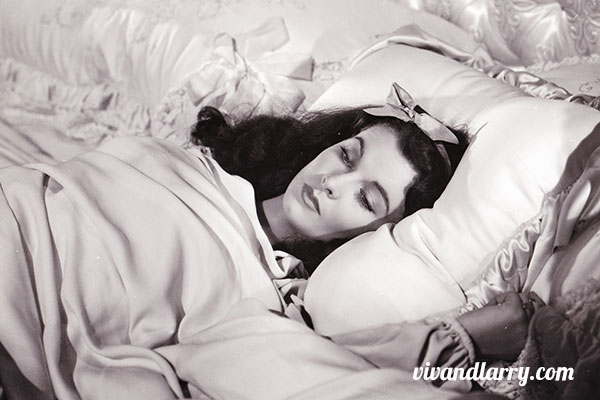

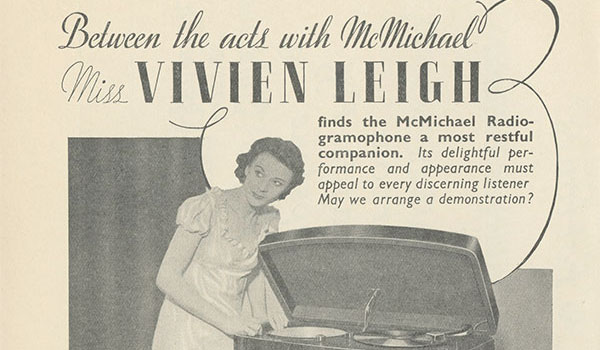
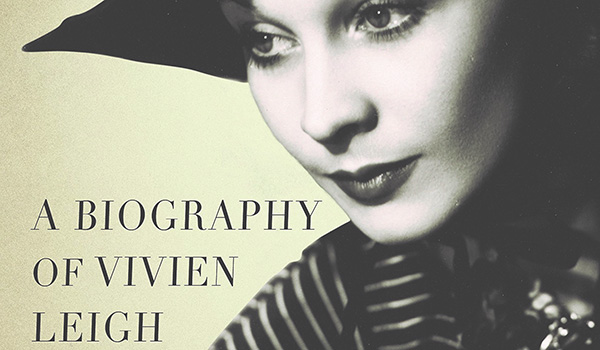

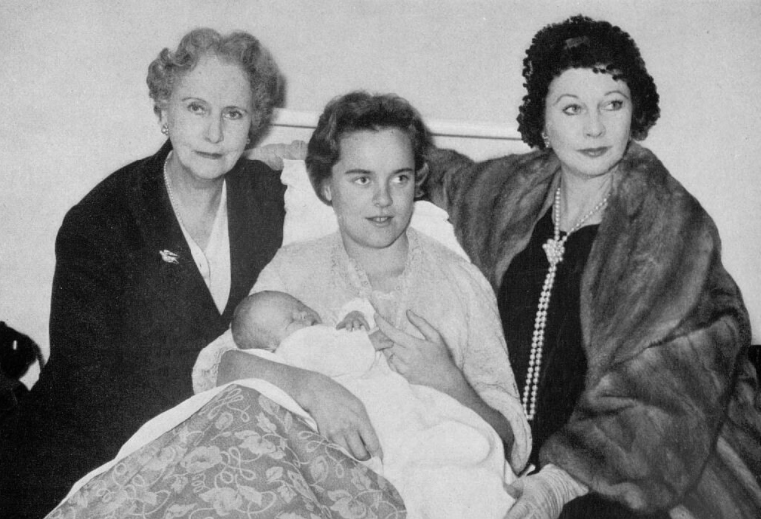
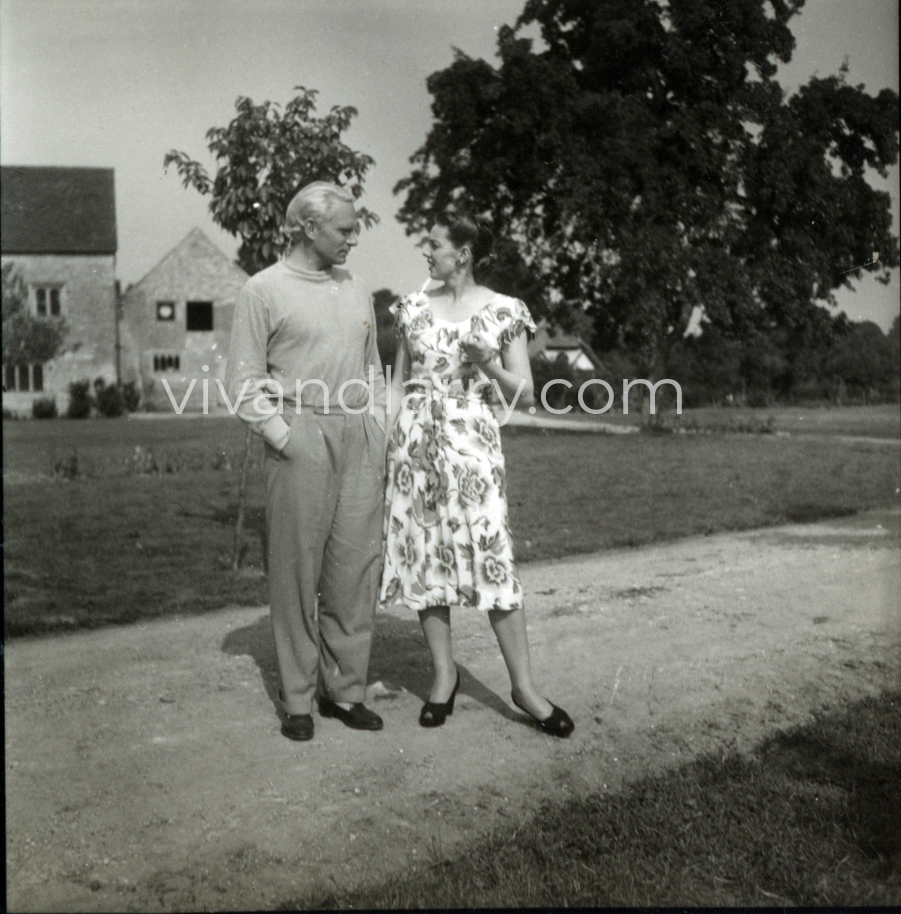
Wonderful article, I really admired Vivien’s spunk and determination! It definately made her the great actress she was, thanks so much for sharing, Kendra!
Me, too! What’s interesting about this article is that, aside from the Selznick-generated info about her parents being French and Irish, it’s mostly factual with details.
In the 2nd to last paragraph it mentions a film “London After Dark”…is that a film that was never made, that went on with a different title, or am I just not familiar with it?
I assume she’s talking about St Martin’s Lane/Sidewalks of London, which had not yet premiered in the US when this article was published. London After Dark could have been the title Alexander Korda was considering for the American release.
Dear Kendra, just found cineprogramme of “Anna karenina” in a garage sale would you like me to send it to you S a gift, of course.it was issued by ” Film-Bühne” so it is in German. Best regardsRenata
THANKS you!! for my daily dose of Viv and Larry. All my admiration and respect for you. My best wishes KB!